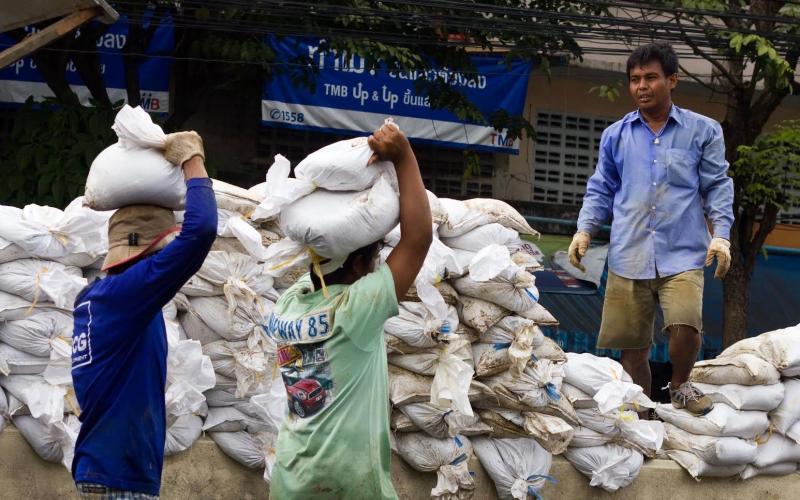Collective action helps communities face flood hazards

Collective action helps communities face flood hazards
A recent study analyzes how collective action can influence community resilience to flood hazards. It highlights several key interactions between human populations and the water systems they depend on.
Yu, D. J., N. Sangwan, K. Sung, X. Chen, and V. Merwade (2017), “Incorporating institutions and collective action into a sociohydrological model of flood resilience,” Water Resources Research, 53, DOI: 10.1002/2016WR019746.
Humans and nature interact in complex and dynamic ways. Socio-hydrology, an emerging field of science, seeks to understand this interaction in the water system. Recent studies in this field have highlighted the importance of social memory in enhancing community awareness of floods. For instance, shared memories of past floods shape not only an individual’s responses to future floods, but also help shape the entire community’s response. This phenomenon has been observed in areas with frequent flooding in developing countries, where people often work together to build, repair, and maintain levees or dikes for the protection of their community.
A group of researchers from the Purdue University, Indiana, and the University of Cincinnati, Ohio, recently published a study in the Water Resources Research journal in which they shed light on this topic. The authors developed a stylized mathematical model that captures the essence of how human-flood interactions are affected by community action.
The researchers modeled community interactions in a low-lying coastal area of southwest Bangladesh that is prone to flooding. In this area, a polder system is built to deal with the floods. A polder is a low tracts of lands separated from the sea or rivers by a ring of dike. This system serves an important role in the community, particularly by protecting agricultural land. The community therefore has a great incentive to maintain the system. On the other hand, incentives are relatively low for those who are less dependent on the polder. The decision to participate is also driven by social pressures such as the fear of exclusion or losing respect. The more households that choose to collaboratively maintain the polder, the more the pressure is felt by those who choose not to. Furthermore, social pressures to maintain the polder increase as communities remember the damages of past floods. Two scenarios of shocks were investigated: exposure to flood risk only, and combined exposure to flood risk and better economic opportunities outside the polder.
The study found that periodic exposure to moderate flooding increases community’s awareness of flood risk, and thus reinforces social pressure to maintain the polder. As a result, the community is better adapted to flood risk, decreasing its vulnerability to similar flood scenarios.
The research also shows that flood protection levels have a significant impact on the long-term resilience of polders. A high flood protection level results in fewer floods but it can be expensive. Fewer floods can erode the community’s memory of past floods and therefore discourage them from maintaining the polder. It leads to a “free rider” problem, a situation when individual households do not contribute to community protection but still benefit nevertheless. When the system fails, social memory may bounce back, but it is difficult to restore collective actions when the majority of community is free riding.
Low levels of flood protection also produce high costs. A polder system can easily fail because frequent flooding results in crop losses and requires continual emergency repair. Families then start looking for livelihoods outside the polder system. As a result, people have little incentive to collaboratively maintain the system, despite a strong memory of flood damages. Furthermore, if people can get higher paying or more stable jobs outside the polder, communities will become less and less dependent on the polder system and will have fewer incentives to maintain it.
The results offer significant insights into the interaction between humans and water systems, particularly for high flood risk rural areas. Collective action and human memory play important roles in such complex systems; they enhance a community’s resilience to flood. High levels of flood protection infrastructure and different shocks (e.g. economic opportunism or migration) can weaken these two important aspects, and thus hinder the flood resilience efforts. Therefore, policy makers should strike a balance between the two elements of flood risk management: conventional infrastructure and the adaptive capacity of the community.




